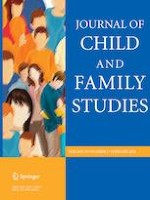28-11-2020 | Original Paper
Stress and Well-Being: A Systematic Case Study of Adolescents’ Experiences in a Mindfulness-Based Program
Gepubliceerd in: Journal of Child and Family Studies | Uitgave 2/2021
Log in om toegang te krijgenAbstract
Research on mindfulness-based programs (MBPs) for adolescents suggests improvements in stress, emotion regulation, and ability to perform some cognitive tasks. However, there is little research examining the contextual factors impacting why specific students experience particular changes and the process by which these changes occur. Responding to the NIH call for “n-of-1 studies” that examine how individuals respond to interventions, we conducted a systematic case study, following an intervention trial (Learning to BREATHE), to investigate how individual students experienced an MBP. Specifically, we examined how students’ participation impacted their perceived stress and well-being and why students chose to implement practices in their daily lives. Students in health classes at two diverse high schools completed quantitative self-report measures (pre-, post-, follow-up), qualitative interviews, and open-ended survey questions. We analyzed self-report data to examine whether and to what extent student performance on measures of psychological functioning, stress, attention, and well-being changed before and after participation in an MBP. We analyzed qualitative data to investigate contextual information about why those changes may have occurred and why individuals chose to adopt or disregard mindfulness practices outside the classroom. Results suggest that, particularly for high-risk adolescents and those who integrated program practices into their daily lives, the intervention impacted internalizing symptoms, stress management, mindfulness, and emotion regulation. Mindful breathing was found to be a feasible practice easily incorporated into school routines. Contextual factors impacted practice uptake and program outcomes. Implications for practitioners aiming to help high school students manage stress are discussed.
